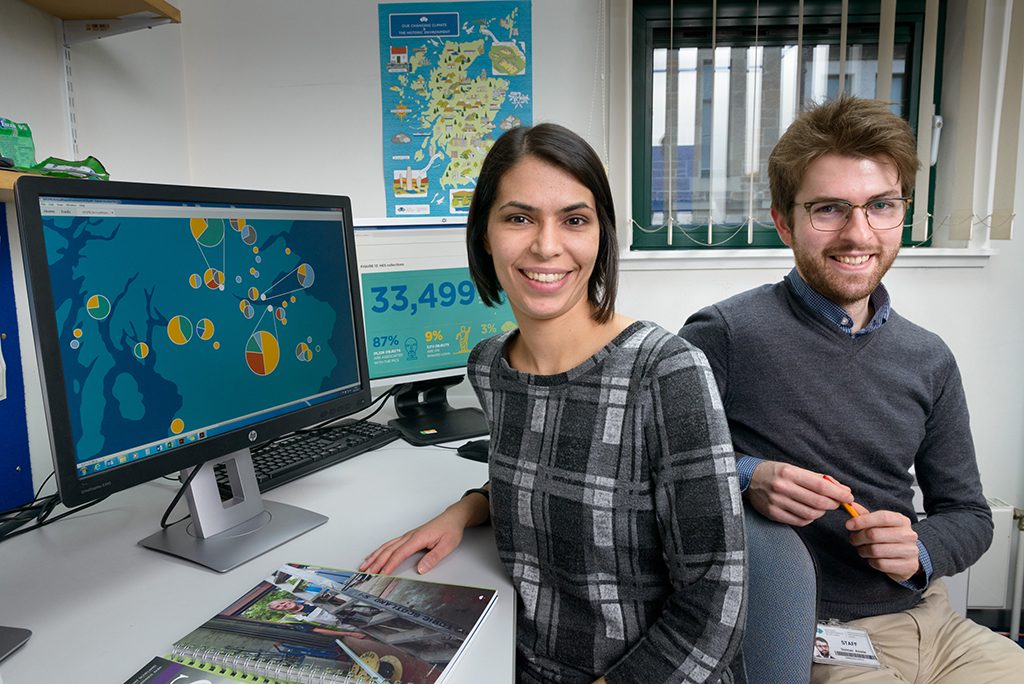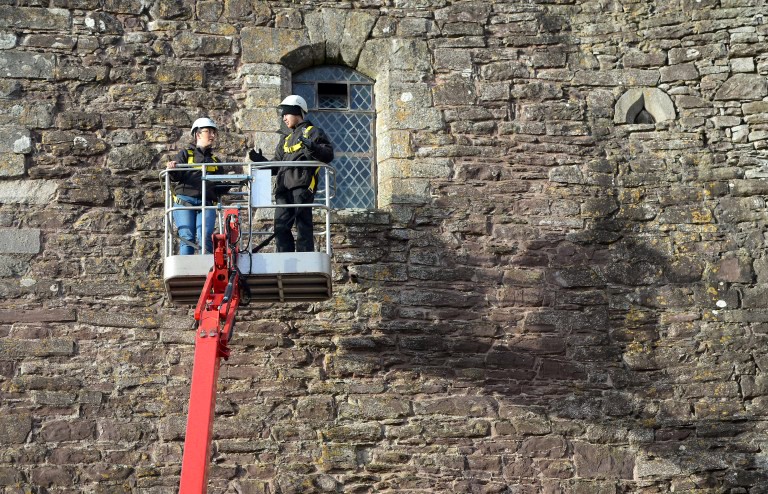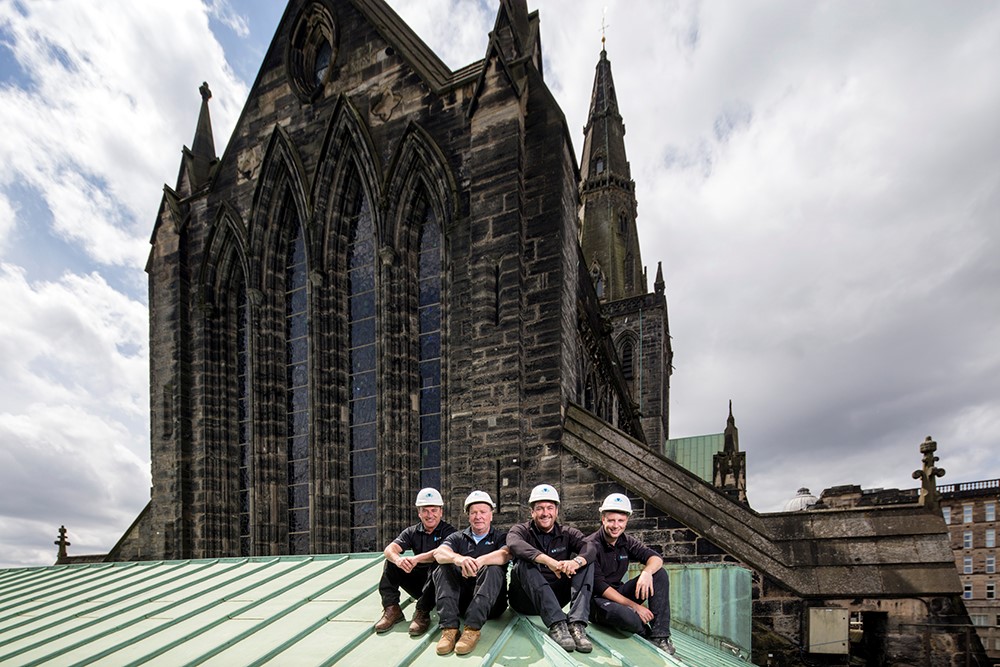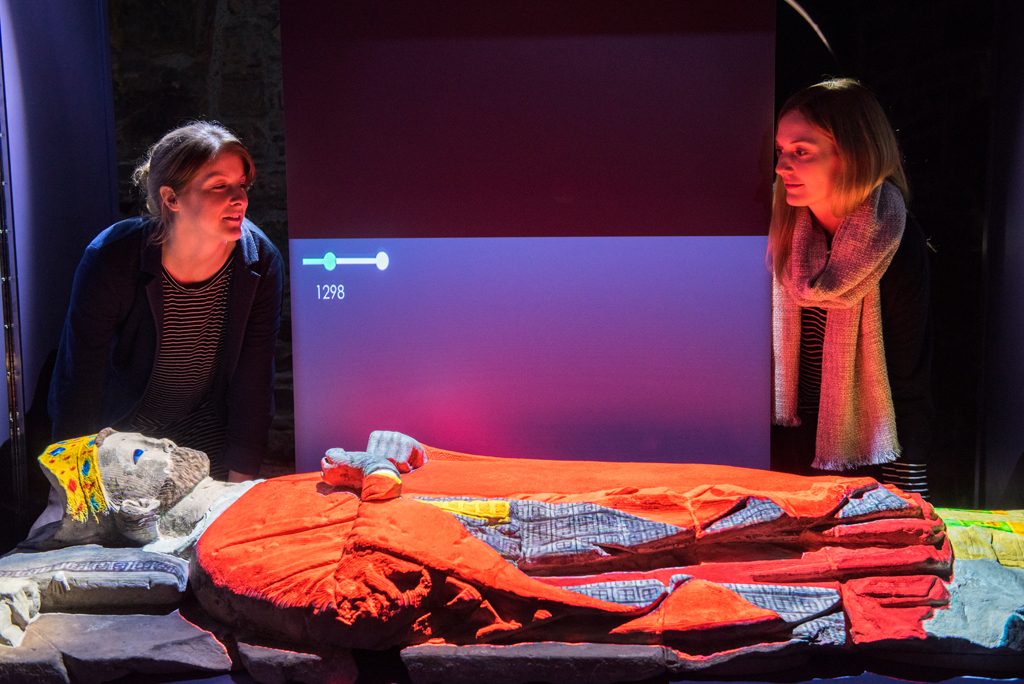2015 was the start of a brave new world for many of us as we officially transitioned from our past lives as Historic Scotland and RCAHMS bods, into the new and exciting future of Historic Environment Scotland. In keeping with the timbre of change, as the old saying goes:
The past is a different country and they do things differently there…
For me, this transition also brought about personal change in the shape of a new role. Heading up the Analytics team, I took on responsibility for the reporting of our activities at our sites to Scottish Ministers. It’s an exciting challenge and an opportunity to shout about the great work we do.

Clare and colleague Duncan Ainslie from our Analytics, Reporting and Audit Team
The creation of HES saw the care and management of our 336 properties in care and associated collections passed to us through a Scheme of Delegation. This is designed to make sure we keep managing these hugely important assets to a high standard, demonstrating our performance in doing so and sharing and reporting on our experience.
Last week, in tandem with the publication of our Annual Report and Accounts marking our first full year of operation, we also published our inaugural annual report on general progress around this area.
Our Properties in Care Report shows all the amazing advances we’re making in our management of historic properties across Scotland, and associated collections.
Here are a just few examples of how we’re doing things differently.
New Tools
We now carry out condition surveys on our properties using a new, bespoke GIS-based survey tool – HES-SIGMA.

Condition survey at Doune Castle
Developed with our partners at the British Geological Survey (BGS), this is an integrated site assessment system. It provides a refined survey process for historic sites.
The from this gives us a level of detail we’ve never had before. This helps us understand the way our monuments are changing, and what’s needed to care for them.
Different Priorities
We’ve also refined the way we prioritise investment for conservation projects.
Our method for doing this considers the social, economic and environmental opportunities associated with our conservation work. This helps us ensure we get the most out of our investment.

We work with partners to address environmental challenges at Linlithgow Loch
Improved Data
We have refined the way we capture information on our properties. This means we can report more accurately than ever before on things that impact members of the public, such as access restrictions.
Having this data helps us understand the value of the work we do to keep sites open. It also means we can analyse things like the impact of access restrictions on the local economy where a site is located.
Better, Faster, Stronger
So, new and better ways of working for a new, improved organisation.
During 2016/17 we invested £7.6million on the conservation and maintenance of properties in our care.
This money enabled us to deliver projects at 65 properties, including:
- conservation work
- enhancements to visitor facilities
- improvements to infrastructure

Some of the conservation team at Glasgow Cathedral, by Daniel Overturf
All of this was in addition to ‘Business As Usual’, or the upkeep we do across the estate on an ongoing basis.
We also spent nearly £250,000 on projects focused on the collections associated with our sites. And, we worked on making our collections more accessible.
Overall, our aim as HES is to be a high performing organisation. This first Annual Report into our Properties in Care and Collections outlines just one aspect of what we are doing every day, to make that aspiration reality.

